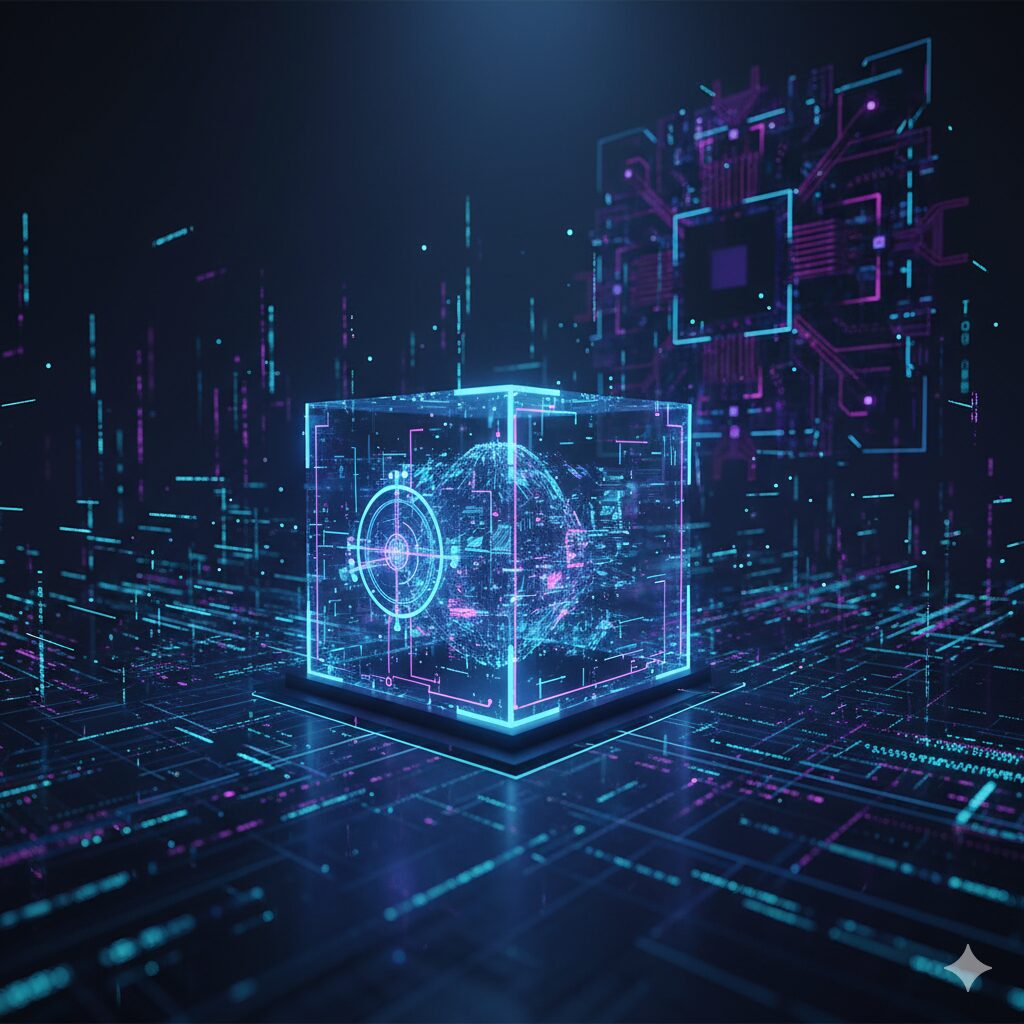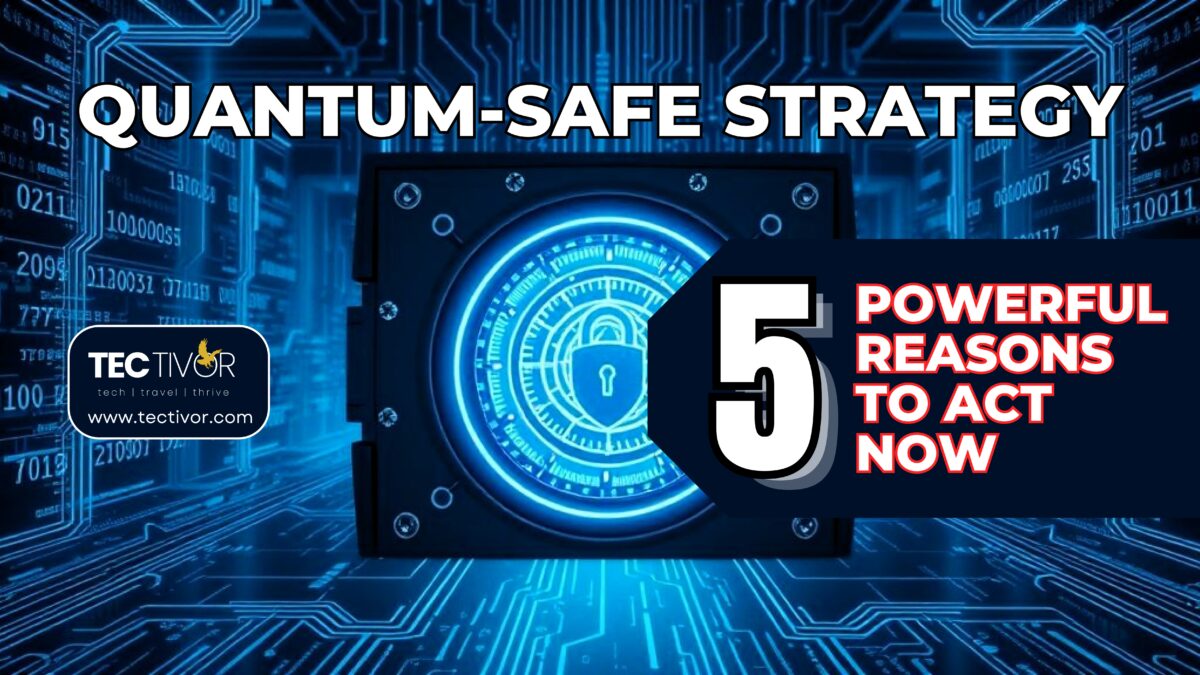Introduction: The Quantum Time Bomb and the Harvest Now, Decrypt Later Threat
A Quantum-Safe Strategy is no longer a future-gazing exercise—it’s an urgent necessity driven by an impending global security crisis. The world is accelerating toward a computing future where quantum processors will shatter the foundation of nearly all modern internet security.
The critical concept driving this urgency is “Harvest Now, Decrypt Later” (HNDL). This strategy, already utilized by sophisticated nation-state actors, involves passively intercepting and storing massive volumes of today’s highly sensitive, encrypted data. Though they cannot break the encryption yet, the plan is to hold onto this data until a powerful, fault-tolerant quantum computer arrives. Once it does, the decryption will be computationally trivial, compromising trade secrets, confidential communications, and intellectual property years after it was initially transmitted.
Table of Contents
The Core Threat: Current encryption methods rely on mathematical problems—like the difficulty of factoring extremely large numbers (used in RSA) or finding discrete logarithms (used in ECC)—that classical computers would need billions of years to solve. However, a quantum computer, using an algorithm devised by Peter Shor (Shor’s Algorithm), can break these protections in a matter of minutes or hours. This means the digital certificates, VPNs, and secure website traffic (HTTPS) that your company relies on will become completely vulnerable.
This realization transforms the Quantum Computer Threat from a theoretical risk into a present-day data exposure event that your company must prepare for immediately.
The Nature of the Threat: Cryptographic Vulnerabilities and Data Lifespan
A Quantum-Safe Strategy begins by answering one critical question: which cryptographic assets will be rendered obsolete, and how quickly must they be replaced?
Public-Key Cryptography is Ground Zero
The main target is Public-Key Cryptography (PKC), the fundamental bedrock of the modern internet. PKC systems like RSA and Elliptic Curve Cryptography (ECC) are used for two primary functions:
- Key Exchange: Establishing a secure channel between two parties (e.g., your browser connecting to your bank).
- Digital Signatures: Verifying the identity of a user or the integrity of a piece of code (e.g., verifying a software update is authentic).
Once broken, attackers gain devastating capabilities: they could impersonate servers, hijack trusted supply chains by altering software updates with malicious code, and retroactively decrypt all stored sensitive traffic (the HNDL threat). This represents a catastrophic failure of the entire digital trust system.
Symmetric Cryptography: The Less Severe, But Still Present Risk
Symmetric cryptography, such as the widely used AES (Advanced Encryption Standard), faces a different and less immediate threat. Grover’s Algorithm, the primary quantum threat to symmetric keys, only provides a quadratic speed-up in breaking the key. In practical terms, this only cuts the effective security strength in half. For example, AES-256 (a standard for highly sensitive data) would be reduced to the security level of AES-128. While this necessitates a simple upgrade—doubling key sizes to maintain current security standards—it confirms that no encryption system is truly immune to the quantum revolution.
The real concern for companies is that your most sensitive, long-lifespan data—data that must remain confidential for ten, twenty, or even fifty years—is already vulnerable to the HNDL attack. If your current encryption protecting your IP is not quantum-safe, that data has effectively been compromised the moment it was intercepted.
The Post-Quantum Cryptography (PQC) Solution and Global Standardization
The only viable countermeasure to the quantum threat is Post-Quantum Cryptography (PQC)—a new generation of complex mathematical algorithms specifically designed to be highly resistant to quantum computers, yet still capable of running efficiently on today’s classical hardware.
The NIST Standardization Effort: A Global Blueprint
Recognizing the existential threat, the U.S. National Institute of Standards and Technology (NIST) has been leading a crucial, multi-year global effort to crowdsource, evaluate, and standardize the next set of PQC algorithms. This process is highly transparent, scientifically rigorous, and is set to define the backbone of encryption for the next several decades.
- The Finalists (The New Backbone): NIST has selected algorithms based on radically different mathematical problems than RSA or ECC, including lattice-based and hash-based cryptography.
- CRYSTALS-Kyber: Selected as the primary algorithm for key establishment (securing communication channels).
- CRYSTALS-Dilithium: Selected as the primary algorithm for digital signatures (verifying identity and authenticity).
- Significance: These standardized algorithms will become mandatory for all U.S. government systems and, by extension, will form the global commercial standard. Your company needs to prepare for this transition now.
Hybrid Cryptography: Mitigating Risk with Crypto-Agility

Since PQC is new, there is always a chance a flaw could be found in a new algorithm before the final standards are rolled out. Therefore, the absolute best practice today is Hybrid Cryptography.
- The Hybrid Approach: Simultaneously implement both a current, classical algorithm (e.g., ECC) and a new, selected PQC algorithm (e.g., Kyber) during key exchange.
- The Insurance Policy: This ensures a double layer of protection. If the new PQC algorithm is proven vulnerable, your data is still protected by the robust existing method. If the quantum threat suddenly materializes, your data is protected by the PQC layer.
Companies also need to cultivate Crypto-Agility: the engineering ability to switch cryptographic systems quickly and efficiently. If NIST finalizes a new standard tomorrow, an agile company can deploy updates rapidly, ensuring long-term resilience and flexibility in a changing cryptographic landsc
Building Your Quantum-Safe Strategy: The Four Pillars of Migration
Transitioning to quantum-safe security is the largest cryptographic migration in the history of computing. It is not a simple software patch—it is a multi-year project requiring strategic foresight.
| Pillar | Actionable Step | Business Impact |
| 1. Cryptographic Discovery | Inventory everything: Use specialized tools to automatically identify every single place cryptography is used across your digital estate: databases, user authentication, VPNs, cloud services, internal APIs, and code signing. | Creates the foundational roadmap. You cannot secure what you cannot see. This reveals hidden technical debt. |
| 2. Prioritize & Risk-Score | Focus on the “Crown Jewels”: Classify data by its confidentiality lifespan. Prioritize migration for data that needs 10+ years of secrecy (IP, PII, long-term contracts). | Ensures resources are focused on the highest-risk, highest-value data, mitigating the primary HNDL threat first. |
| 3. Build Crypto-Agility | Decouple Cryptography: Modularize your software architecture so that the underlying crypto algorithm can be swapped out like a library. Implement Hybrid Cryptography today. | Future-proofs systems. Ensures rapid adaptation to finalized NIST standards or any new discoveries of algorithmic flaws. |
| 4. Budget, Train, and Partner | Allocate resources: Budget for hardware upgrades and for retraining engineering teams in PQC protocols. Partner with specialized vendors for automated discovery and implementation tools. | Turns a necessary cost into a strategic investment, ensuring talent is ready and the project is adequately funded for a multi-year effort. |
Conclusion: The Cost of Ignoring a Quantum-Safe Strategy
The arrival of a full-scale, fault-tolerant quantum computer may still be a few years away, but the threat—the vulnerability to HNDL—is already here and active. Every day that passes is a day that adversaries can collect your encrypted intellectual property.
A Quantum-Safe Strategy is not merely about staying compliant; it is about protecting your company’s trust, its competitive edge, and its long-term viability. The migration is complex and takes years to complete, but the deadline for its completion is effectively today’s date, plus the time it takes to build a viable quantum computer.
Failing to act now is the ultimate form of digital negligence. Companies that proactively invest in Post-Quantum Cryptography, implement Hybrid Cryptography, and develop Crypto-Agility are not just preparing for the future; they are buying the essential digital insurance needed to survive the quantum era.
The future of cybersecurity belongs to those who are ready.
💡 Stay ahead of the future! Follow us on:
Facebook | LinkedIn


